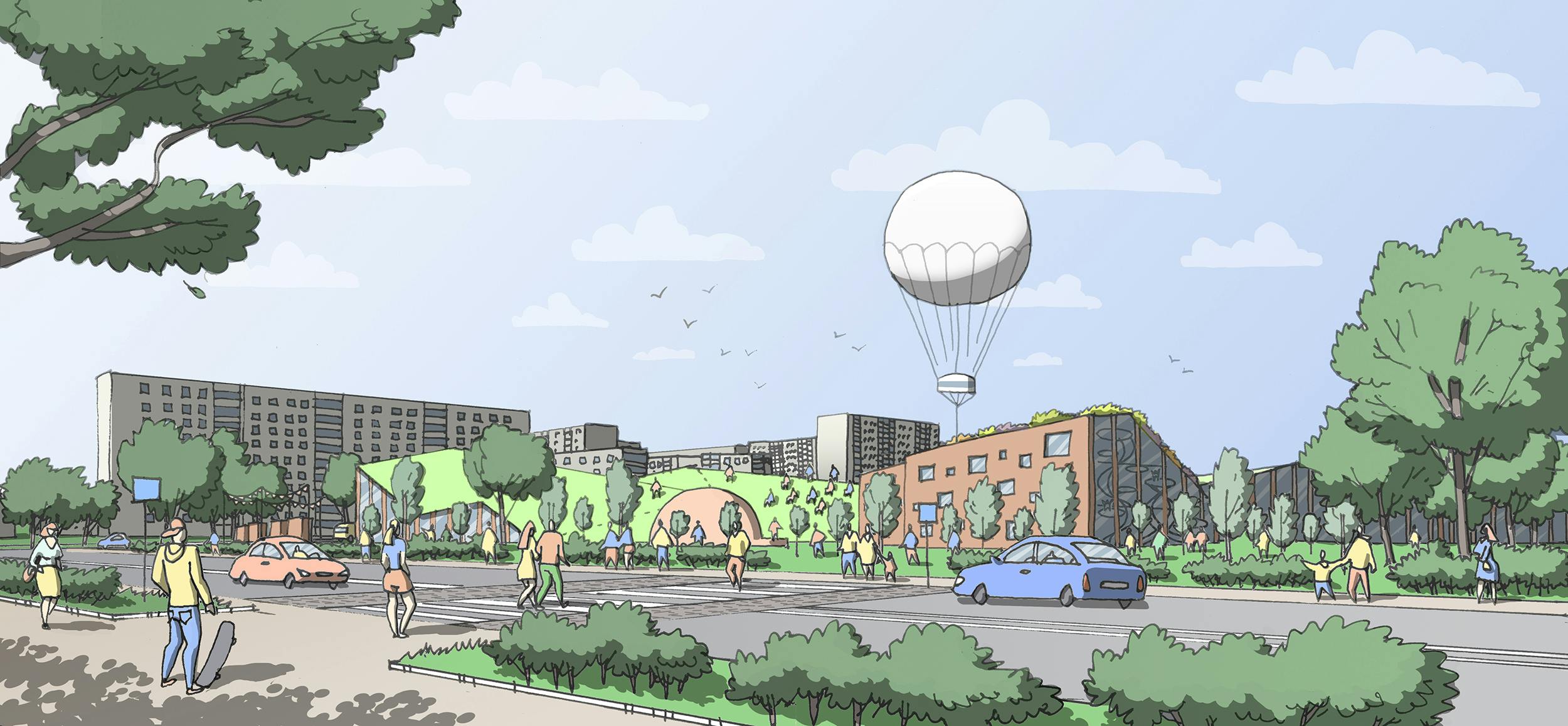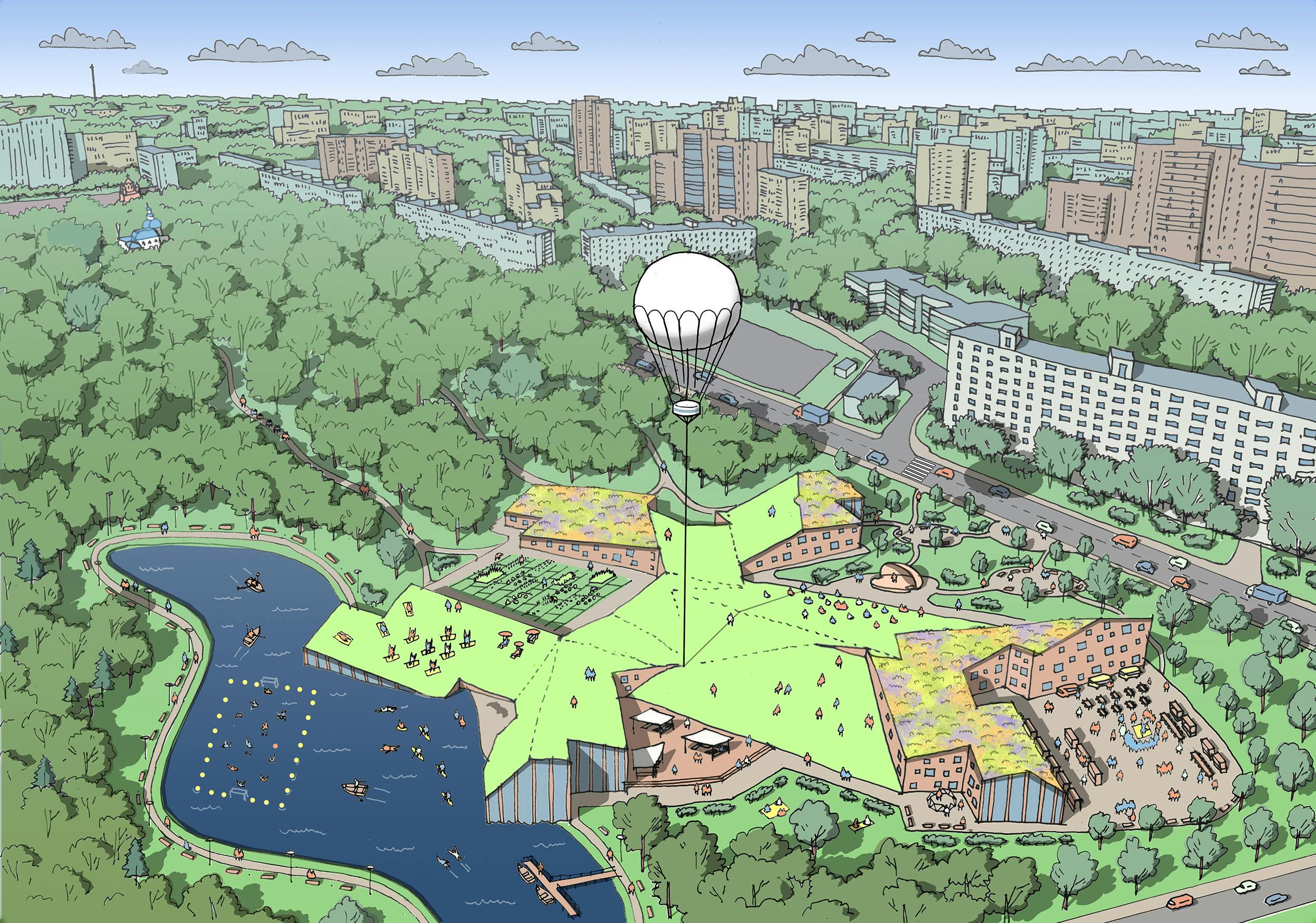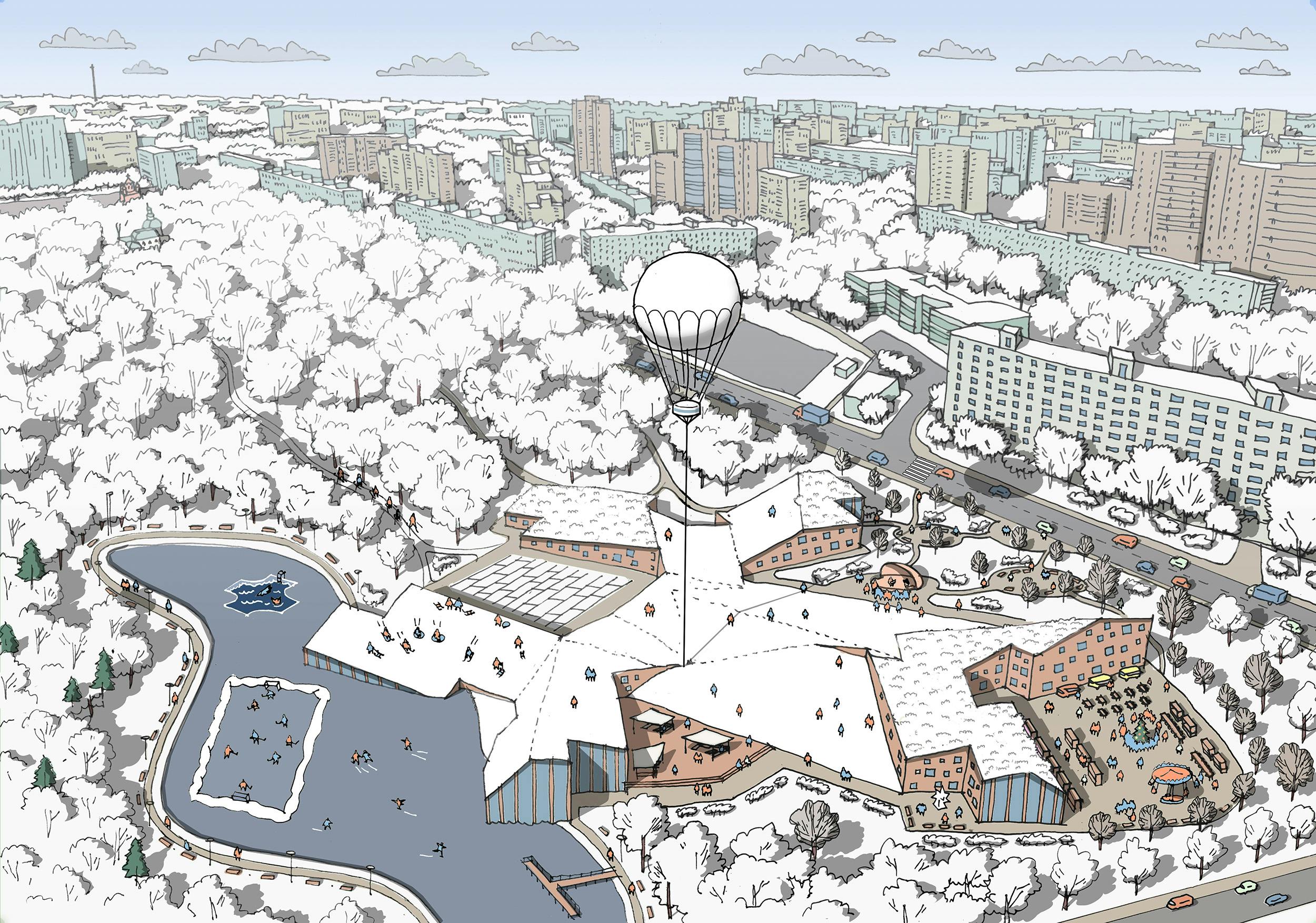KHOVRINKA
Municipal sociocultural center
Khovrino District, Moscow, Russia
- client: Evgeny Bunimovich, Children's Rights Commissioner in Moscow, Moscow City Duma deputy candidate
- organized by: Moscow Architectural School MARCH
- illustrator: Sergey Komarov
August 2019
more about the project
video of a presentation held in Moscow Architectural School MARCH

Municipal sociocultural center Khovrino is a center of the district’s public life. Everything happening here on the inside and on the outside all year round is a response to the requests of its residents.
PLACE
The sociocultural center is located on the area of the former abandoned Khovrino Hospital (also known as Khovrinka), one of Moscow’s most well-known unfinished projects of the late Soviet times.
The area used to be a part of the park on the Khovrino (Grachevka) Manor territory, and nothing had ever been built there prior to the hospital. The Likhoborka River used to run there and, as seen on maps from 1858 and 1878, it used to form a scenic pond. For the hospital to be built, the river had to be hidden underground. The hospital is now completely demolished, and the terrain is clear and ready for a renovation program.
PROBLEMS / OBJECTIVES
It is fair to admit that the northern part of Moscow currently lacks in social and cultural spaces, spaces where the young could express themselves and fulfill their potential. There now exist some “cultural consumption” spots, but no places where the citizens could feel and recognize their social unity, find their sociocultural identity, where they could develop practices of social communication and interaction, build the social and cultural capital of their district. The current infrastructure in Khovrino suitable for the age group 15–19 is mostly limited to cinema, sports halls, and green recreation zones.
Khovrino has now got very few public spaces, and the all fail to fully serve as a productive infrastructure for the district’s social life.
- Northern River Port Park was founded in 1937. Its spatial arrangement has not changed ever since: symmetrical alleys, flowerbeds, fountains. There is an ice skating rink, a summer cinema, and a restaurant on the territory.
- Druzhba (Friendship) Park was founded in 1957. It is a typical leisure and recreation park, a space for “cultural consumption.”
- The park by the Moscow Canal and Khimki Urban Forest are the recreational zones for activities both on land and on water. There citizens can find trees, lawns, green routes, and a beach.
- Grachevka Park offers cycle lanes, a playground, a space for walking dogs. However, since it is a territory of the Khovrino (Grachevka) Manor, these elements disturb visitors from the essence of it, and, as a result, they fail to serve for supporting cultural identity of the space.
The Government of Moscow has a plan to erect eight residential towers and commercial facilities on the territory of former unfinished Khovrino Hospital. This action will increase the number of residents and, subsequently, the demand for “cultural consumption” will to remain unaddressed. Prior to this decision, there were not made any actions which would help to establish the citizens’ needs and demands. It is now perfect time to offer a modern alternative to current public and social facilities and spaces of Khovrino. The former Khovrino Hospital territory can perfectly serve for this purpose.
SOLUTION
Integration of constructions into landscape creates spaces which combine the functions of a park and buildings as facilities. Such integration allows it to keep any activity both outside (and make it open to anyone) and inside (for instance, if the weather is bad).
We offer to fit the outline of the future construction within the outline of the demolished hospital. This would not only serve as a tribute to the local legends which were born around this abandoned space and which attracted a lot of attention to the district, but also be a reasonable decision in terms of construction of a new building—the solid foundation remained untouched by the demolition.
In order to establish how important the former abandoned hospital really is to the identity of the district, we offer to hold participatory design sessions with the locals of the district.
Instead of carrying out the renovation of the underground water collector where now the Likhoborka River is kept, we suggest to open it and create a controlled body of water on the ground. This is going develop the aquaculture in the district and make Khovrinka its center by offering multiple ways of using water fronts outside and inside (in a form of indoor pools).
We suggest to name the sociocultural complex _Khovrinka- not only because the space already has this name and there already exists geographical association with it, but because these has to happen collective reconsideration of the district and the negative Soviet heritage that was passed down to the new generation via the notorious abandoned sight. This agenda should also be discussed during participatory design sessions with the locals of the district.
inside : :
- day care center (for children)
- coworking and library (for young mothers, young startuppers, and freelancers)
- FabLab and workshops
- social counselling center and offices of social projects
- Khovrino forum: meeting hall, singing field, market
- Khovrino visitor center and reception for the whole sociocultural center
- aquaculture center + physical practices hall overlooking a pond and a park
outside : :
- main stage and amphitheater
- market square for holding fairs with a zone for an amusement park and infrastructure for food trucks
- space for workshop installations, FabLab
- summer terraces and outdoor coworking spaces
- aerostat complex (a fixed balloon)
- green slope for physical practices (yoga, exercises, trainings) in warm seasons / snow slope for sledge and snow saucer riding in winter
- zone for water polo and free swimming in warm seasons / skating and ice hockey rink in winter
- green lawn: leisure zone with a shady grove
- kitchen garden

